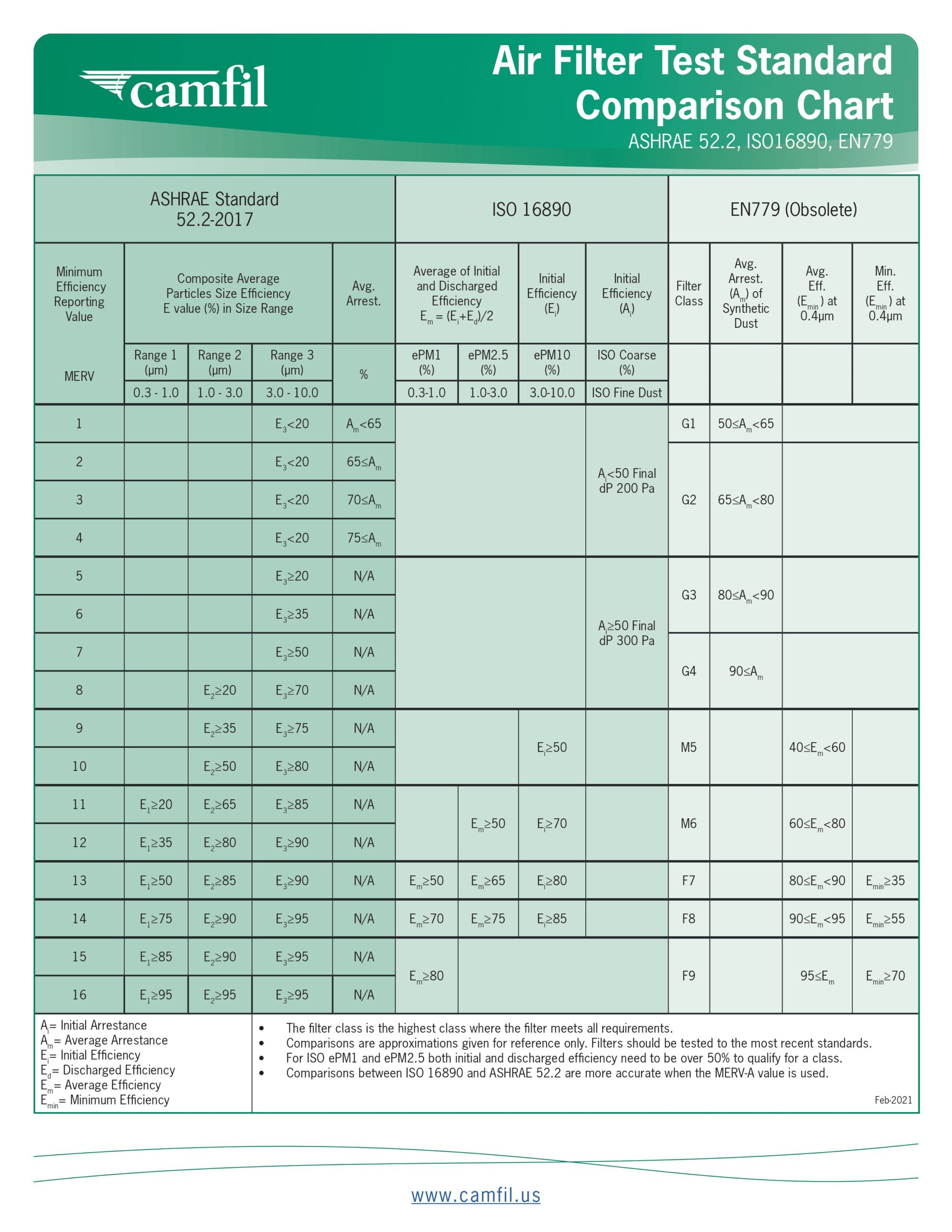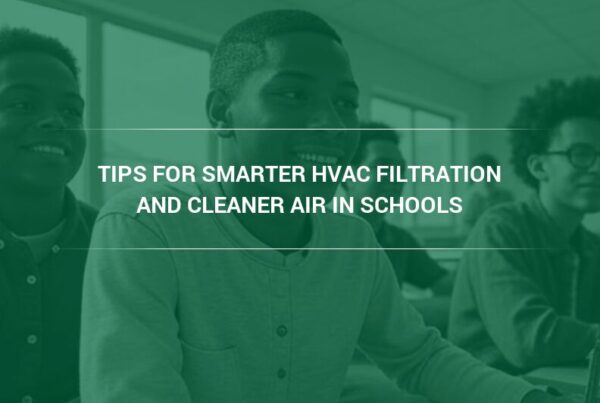Indoor air quality (IAQ) significantly influences the health of individuals who work in and visit commercial buildings. Good IAQ fosters a healthier setting for inhabitants, boosting their overall wellness and efficiency. Subpar IAQ is associated with symptoms such as headaches, tiredness, difficulty focusing, and irritation of the eyes, nose, throat, and lungs. Therefore, it’s crucial to uphold safe IAQ for the wellbeing and productivity of those within the building.
Mold is a significant threat to IAQ in commercial buildings. There are many varieties of mold species capable of producing allergens or toxins that harm health. Preventing mold growth and addressing existing issues is essential due to potential health risks.
Effective mold control requires diligence and proper maintenance of building and HVAC systems. High-quality air filtration systems play a crucial role in safeguarding the health of occupants and ensuring regulatory compliance.
The Problem: Mold in Commercial Buildings
A combination of factors contributes to mold growth in buildings, primarily moisture problems like water leaks, high humidity, or condensation. Inadequate ventilation exacerbates these issues by raising humidity levels, creating an ideal breeding ground for mold. Molds feed on organic materials such as wood, paper, carpet, and foods, further promoting growth under conducive conditions. Factors like temperature and light also play roles, with molds favoring dark, warm, and moist environments.
In the United States, over 1,000 mold species have been identified, while globally, the count exceeds 100,000. Approximately 45 million U.S. homes and buildings lack proper ventilation, heating, or insulation, making them more susceptible to mold growth. Mold-related infections incur a significant economic toll, costing the U.S. economy around $5.6 billion annually.
Allergic reactions to mold can occur immediately or over time. Symptoms include irritation to the eyes, skin, nose and throat in some individuals. While molds typically don’t lead to systemic infections, exceptions exist for those with compromised immunity, uncontrolled diabetes, or on immunosuppressive medications. Mold exposure can trigger asthma attacks in susceptible individuals.
Mark Davidson, Manager of Marketing and Technical Materials at Camfil USA advises prioritizing prevention through proper air filtration, “Maintaining HVAC systems and overall building upkeep prevents health risks for occupants and potentially messy and costly mold remediation.”
The Solution: Air Filtration
Air filters with high capture efficiency purify the air by removing most mold spores, as well as other allergens like pollen, dander and dust, preventing them from circulating in the air. By capturing mold spores, air filters help prevent the spread of mold.
Molds reproduce by releasing tiny spores, ranging in size from 2 µm to 100 µm in diameter, which can easily travel through the air over long distances. Effective air filtration is necessary to address mold contamination. However, it’s important to note that for filters to work efficiently in removing contaminants, air must pass through them.
When dealing with elevated mold levels, increasing air changes within a space can impact the mold’s ability to reproduce. As more air passes through the filter, the overall removal efficiency improves. In cases where specific mold species pose health risks, using HVAC systems with appropriate filtration can minimize exposure, especially for molds requiring higher filtration efficiency due to their smaller particle size.
At times, the HVAC system itself can serve as a source of mold and other pollutants. For instance, moisture or dirt buildup in the ventilation air filters can contribute to indoor air quality issues. Stagnant water in drip pans or ducts may foster microbial growth within the system. Air filters play a crucial role in cleaning the air within HVAC and air purification systems by blocking pollutants from entering the indoor environment.
The Significance of Air Filter Efficiency
There are a variety of filters available, each with different efficiency ratings for capturing particles of various sizes. One widely used measure of filter effectiveness is the minimum efficiency reporting value (MERV) established by the American Society of Heating, Refrigeration, and Air Conditioning Engineers (ASHRAE) in standard 52.2.2017.
MERV evaluates a filter’s ability to trap particles ranging from 0.3 to 10 microns in diameter. Filters are classified on a scale from 1 to 16 based on their MERV ratings, with higher numbers indicating better filtration performance. The following table outlines the efficiency of different filters in capturing airborne particles:

Differentiating MERV and MERV-A Ratings
A high MERV value in an air filter indicates better effectiveness in capturing small particles compared to filters with a lower MERV rating. However, air filters often struggle to maintain their designated MERV rating over time. To tackle this issue, ASHRAE introduced the MERV-A rating, as outlined in 52.2 Appendix J. This rating signifies that the filters have undergone supplementary testing, providing evidence that their MERV value remains consistent throughout their lifespan.
Certain air filters come equipped with an electrostatic charge that temporarily boosts their particle capture efficiency, resulting in an inflated MERV rating. However, as the filters accumulate airborne contaminants, the electrostatic charge diminishes, leading to a decline in the MERV value. For instance, the particle capture efficiency of a MERV 13 filter may quickly decrease to match that of a MERV 8 filter.
For optimal lifetime performance, facility operators should select air filters with a MERV-A rating. To effectively capture mold spores, select filters with a minimum of MERV 13/13A. It’s important to note that particulate air filters capture particles of varying sizes. For instance, a MERV 14/14A filter eliminates an average of 75 percent of particles larger than 0.3 microns, while a MERV 16/16A filter targets 95 percent removal.
Keep in mind that limitations, such as the filter capability of the HVAC system, might prevent the use of higher MERV-rated filters such as MERV 14A filters. In such situations, opt for the highest MERV-A-rated filter that your HVAC system can support. Most systems can accommodate 2-inch MERV 13 pleated filters.
HEPA filters can capture up to 99.97 percent of particles greater than 0.3 µm. HEPA filters may not be compatible with all HVAC systems but are commonly used in stand-alone room air purification systems that target specific areas. Regardless, it’s important for HEPA filters to be individually tested and labeled.
Molecular filters, commonly known as activated carbon filters, are vital for handling gases and vapors, and they also contribute to mold management. However, there’s a caveat: these filters specifically target volatile organic compounds (VOCs) which are responsible for the moldy-musty odor. As a result, it’s possible to mask a mold issue by eliminating the odor, leading to the false assumption that the mold is under control, even when it might not be.
Case Study: Successful Elimination of Mold Odor
Following torrential rainstorms, a southeastern U.S. city government administrative services building experienced flooding. Once the water receded, the building was plagued by mold issues. Despite undertaking mold abatement measures, a persistent and potent mold odor lingered, posing health risks to employees.
Seeking a solution, the city enlisted the help of Camfil’s Washington North Carolina operation. Camfil provided air cleaners equipped with molecular filtration specifically designed for odor control. The city received four CamCleaner 1000 Vertical freestanding, portable air cleaners, each housing 20 CamCarb canisters filled with activated carbon, ideal for removing gaseous contaminants.
To ensure optimal placement and operation, Camfil also provided staff assistance with technical aspects. The units were strategically positioned on the first floor of the multi-story offices, near HVAC return vents. Leveraging the central HVAC system’s fan, the CamCleaners efficiently circulated clean, filtered air throughout the facilities.
Within just 15 minutes of activating the CamCleaners, the air quality improved significantly. After only two weeks of continuous operation, the mold odor was completely eliminated and did not return. Impressed by their performance, the city decided to invest in a permanent CamCleaner unit, ensuring readiness for any future air quality or odor concerns.
Implementation and Maintenance to Manage Mold and IAQ
Effectively managing indoor mold demands diligence and adherence to proper building and HVAC system maintenance practices. Central to controlling air quality is keeping contaminant levels within acceptable limits, whether they are detectable by occupants or aligned with health standards. Air filtration consistently plays a pivotal role in achieving this goal.
Facility professionals play an important role in maintaining IAQ. To achieve this, consider the following strategies:
- Identify Hazards: Be aware of potential airborne particulate and vapor hazards within indoor spaces. Recognize potential airborne particulate and vapor hazards present in indoor environments.
- Reduce Airborne Pollution: Implement measures to reduce indoor air pollution, including regular maintenance of ventilation systems and the installation of advanced air filtration systems.
- Adhere to a Maintenance Plan: Establish a comprehensive maintenance plan and schedule when installing new air filters. This ensures clean air for building occupants and optimal IAQ.
- Schedule Filter Replacement: Regularly replace air filters according to the established schedule. This practice prevents unplanned expenses and keeps systems functioning effectively.
- Monitor HVAC Equipment: Consult with air filter professionals to measure pressure and HVAC system performance. This ensures proper airflow and maintains air quality.
- Understand Regulatory Requirements: Train employees to recognize potential health and safety violations and educate them on how to report these issues.
Air Filtration Solutions for Mold Control
The following Camfil air filtration solutions are ideal for capturing airborne mold spores:
Durafil® ES³ high-capacity, high-efficiency, V-bank style air filters. In situations where space is limited, these air filters are used as pre-filters to the main HEPA filter. They are available with MERV 11A, 13A, 14A, 16A and MERV 13 to MERV 16 ratings with an industry-leading 5-Star Energy Cost Index rating.
Durafil® Compac high-performance 6-inch-deep V-bank air filters that provide full-size performance to air handling units in restricted spaces. They are available with MERV 13A, 14A, 15A and MERV 13 to MERV 15 ratings.
Hi-Flo® ES pocket air filters are ideal for use as pre-filters to capture larger particles before they reach the main HEPA filter, helping to maintain the integrity and extend the lifespan of the more costly HEPA filters. They are available with MERV 11A. 13A, 14A, 15A and MERV 11, 13, 14, 15 ratings.
Opti-Pac® Durable compact air filters can provide high MERV-A particle capture efficiency in those units where only 2-inch or 4-inch air filters are possible.
AQ13® high-capacity pleated panel filter delivers high IAQ and extended service and is ideal for facilities where air handling equipment is limited to air filters that are 4 inches or less. These extended-life air filters can remain in service for up to six months.
Conclusion
In commercial buildings, air filtration plays a pivotal role in maintaining a healthy indoor environment by preventing mold growth. Effective air filters capture airborne mold spores, preventing them from circulating within the building. By reducing mold spore levels, filters inhibit mold growth on surfaces and in HVAC systems. This not only improves air quality but also eliminates musty odors, enhancing comfort and productivity for occupants.
Camfil offers advanced particle air filtration solutions that are up to the task of removing airborne mold spores and maintaining high IAQ. In addition, molecular filters effectively combat mold-related odors, contributing to a healthier indoor environment.
²https://www.osha.gov/publications/shib101003
³https://www.osha.gov/publications/shib101003
⁴https://www.waterdamageadvisor.com/mold/statistics/
⁶https://www.epa.gov/mold/mold-course-chapter-1
⁸https://cleanair.camfil.us/2020/01/09/how-air-filters-capture-mold-spores-in-the-air/



